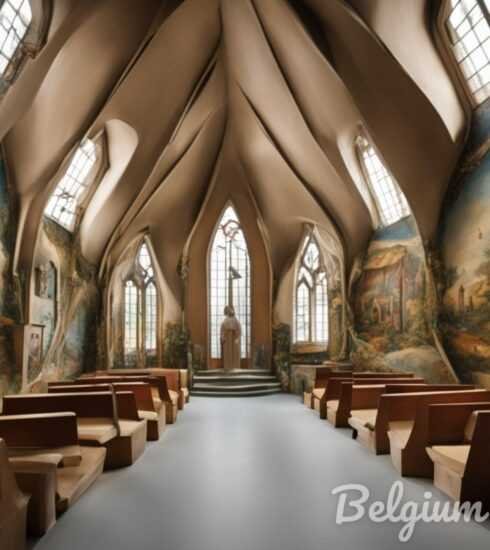Exploring Belgian Art: Dive into a Surrealist Adventure in this Whimsical Article
Introduction
Belgium is known for many things: its chocolate, waffles, and of course, its beers. But did you know that this small country in Western Europe is also home to a vibrant and influential art scene? From the Renaissance masters to the avant-garde movements of the 20th century, Belgian artists have consistently pushed the boundaries of artistic expression. One of the most intriguing and captivating genres of art to emerge from Belgium is surrealism. In this article, we will embark on a surrealist adventure through Belgian art, exploring the whimsical wonders created by the country’s talented artists.
The Birth of Surrealism
Before we delve into the world of Belgian surrealism, let’s take a step back and understand the origins of this artistic movement. Surrealism was a cultural and artistic movement that emerged in the early 20th century, largely in response to the devastation and irrationality of World War I. The movement was influenced by the writings of Sigmund Freud, who explored the subconscious mind and the power of dreams. Surrealists sought to liberate the imagination and create art that defied reason and logic.
Belgium’s Surrealist Roots
Belgium played a crucial role in the development of surrealism. The movement’s founder, André Breton, was a frequent visitor to Brussels and had close ties to the Belgian art scene. The first Surrealist Manifesto was published in 1924, and several Belgian artists quickly embraced the movement’s principles and techniques. Prominent Belgian surrealists include René Magritte, Paul Delvaux, and James Ensor. These artists created some of the most iconic and thought-provoking works in the surrealist art canon.

Exploring Belgian Surrealist Art
Belgian surrealism is characterized by its whimsical and dreamlike quality. Artists used a variety of techniques to create otherworldly landscapes and scenarios. Some of the key themes explored in Belgian surrealism include:
- Subversion of Reality: Belgian surrealists sought to challenge conventional notions of reality and society. Their works often feature unexpected juxtapositions and incongruities.
- Unconscious Mind: Inspired by Freudian theories, Belgian surrealists often explored the subconscious mind in their works. Dreams and fantasies became a rich source of inspiration for these artists.
- Magical Realism: Belgian surrealism often blends elements of fantasy and reality, creating a sense of magic and wonder in the viewer.
- Social Critique: While surrealism is often associated with escapism, Belgian surrealists also used their art to comment on social issues and critique the status quo.
René Magritte: The Master of Surrealist Puzzles

One of the most famous Belgian surrealists is René Magritte. Born in Lessines, Belgium in 1898, Magritte is renowned for his thought-provoking and enigmatic paintings. His work challenges our perceptions of reality and explores the hidden mysteries of the everyday world. Some of his most iconic paintings include “The Son of Man,” which features a bowler-hatted man with an apple obscuring his face, and “The Treachery of Images,” which depicts a pipe with the text “Ceci n’est pas une pipe” (“This is not a pipe”). Magritte’s use of witty titles and visual paradoxes has made him one of the defining figures of surrealism.
Paul Delvaux: The Surrealist Architect
Another important figure in Belgian surrealism is Paul Delvaux. Born in Antheit, Belgium in 1897, Delvaux is known for his haunting and dreamlike paintings of nude women and classical architecture. His works often feature desolate landscapes and mysterious figures bathed in moonlight. Delvaux’s fascination with the architectural motifs of ancient Greece and Rome gives his paintings a surreal and otherworldly atmosphere.
The Influence of Belgian Surrealism
Belgian surrealism has had a profound impact on the art world, both within the country and beyond. The movement’s emphasis on the irrational and the subconscious paved the way for future artistic developments, such as abstract expressionism and pop art. Belgian surrealists continue to inspire contemporary artists with their imaginative and daring approach to art.
Surrealist Museums in Belgium

If you’re fascinated by Belgian surrealism, a visit to one of the country’s many art museums is a must. Here are some of the top museums in Belgium that showcase surrealism:
- Royal Museum of Fine Arts, Antwerp: This prestigious museum is home to an extensive collection of Belgian art, including works by René Magritte and other surrealists.
- Royal Museums of Fine Arts of Belgium, Brussels: The Royal Museums of Fine Arts of Belgium in Brussels house an impressive collection of surrealist art. The collection includes works by Magritte, Delvaux, and other Belgian surrealists.
- Magritte Museum, Brussels: Dedicated solely to the works of René Magritte, this museum provides a comprehensive overview of the artist’s career and his contributions to surrealism.
The Legacy of Belgian Surrealist Art
Belgian surrealist art continues to captivate audiences around the world. The whimsical and thought-provoking works created by Belgian artists have left an indelible mark on the art world. The influence of Belgian surrealism can be seen in the works of contemporary artists, who continue to explore the boundaries of artistic expression and challenge our perceptions of reality.
Conclusion
Embarking on a surrealist adventure through Belgian art is a fascinating journey into the depths of the human imagination. Belgian surrealists have pushed the boundaries of artistic expression and challenged conventional notions of reality. Their works continue to captivate audiences around the world with their whimsical and thought-provoking themes. Whether you’re a fan of art history or simply looking for a unique and immersive cultural experience, exploring Belgian surrealism is a must. So, grab your passport and dive into the whimsical wonders of Belgian art.






